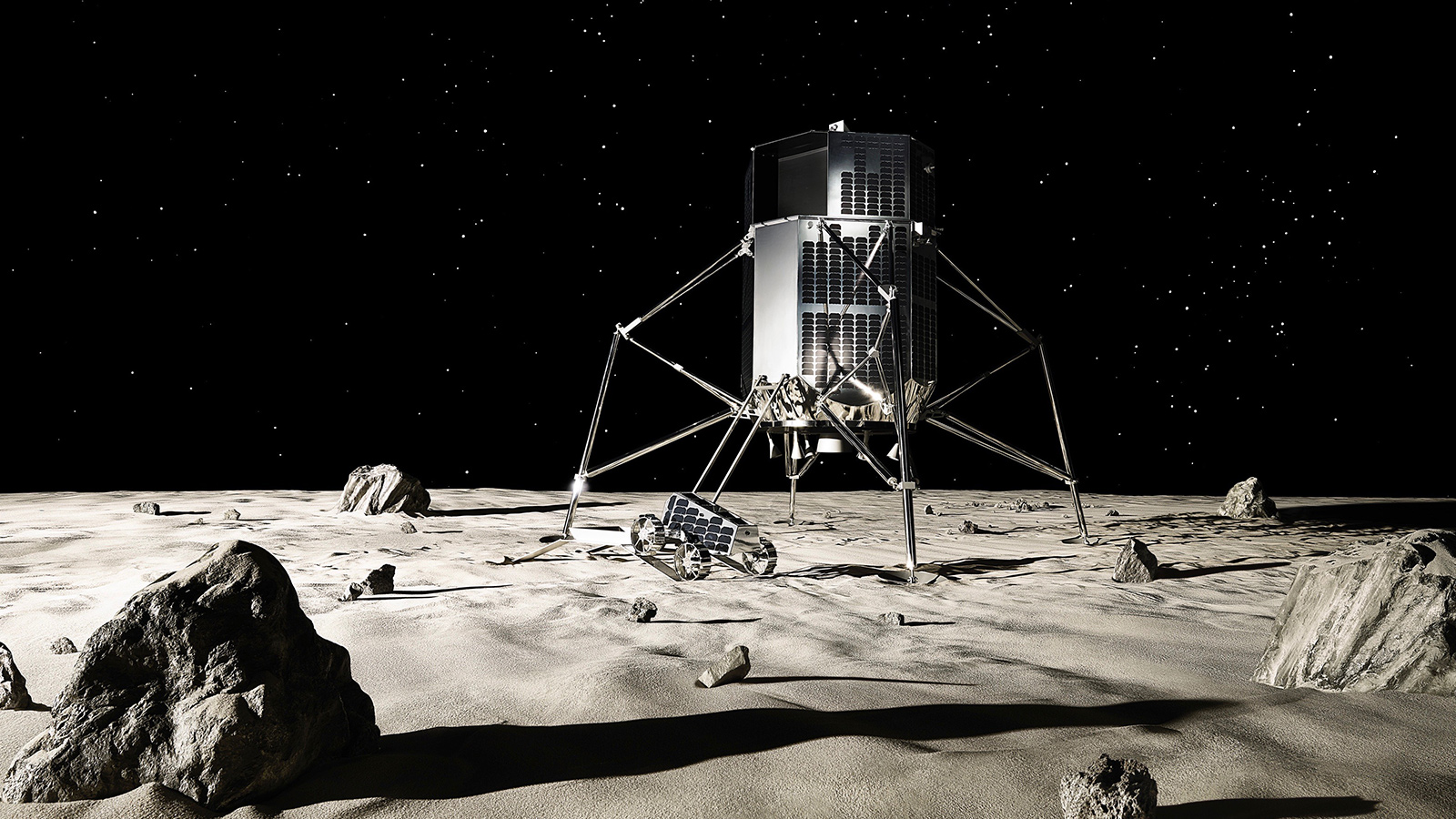Stay Up to Date
Submit your email address to receive the latest industry and Aerospace America news.
Falcon 9 launches targeted for 2020 and 2021 would test lander and rover technology
The planned lunar probes announced Wednesday by the Tokyo startup ispace would be the first concrete steps in what the company’s CEO describes as a shared vision with launch provider SpaceX to get humans living and working in space.
Ispace plans to launch one probe in mid-2020 and another in mid-2021 as secondary payloads on SpaceX Falcon 9 rockets. The launch contracts with SpaceX mark the beginning of the process of proving “the technological capability to extract water from the moon,” said ispace founder Takeshi Hakamada.
Eventually, ispace plans to launch a succession of probes to locate water ice for processing into fuel for rockets.
But first things first. Each of these Hakuto-R probes would test aspects of a spacecraft design that earned ispace a spot as a finalist in a Google X Prize competition to soft land an object on the moon. The foundation announced in April that it would not award a cash prize as originally planned.
The 2020 spacecraft would test orbiting and landing technologies. The 2021 version would land and also deploy two rovers. Neither the 2020 nor 2021 probes will carry scientific instruments, however.
These initial landers and rovers will be abandoned on the moon “as historic artifacts like the Apollo modules,” said Aaron Sorenson, a spokesman for ispace, which has grown to 66 employees since its founding in 2010.
The company wants to follow these flights with a succession of probes starting in 2022.
“Around 2030 we expect to start delivering fuel made from water to spacecraft,” Hakamada said, adding that details of how to build structures on the surface and service a broader “lunar resource market,” will be determined after testing the Hakuto-R and rovers on the lunar surface.
“We don’t have a concrete plan to mine the water by ourselves,” Hakamada said.
As far as funding, ispace said it raised $90 million in venture capital financing last December from Japan-based investors, including Suzuki, Japan Airlines and Tokyo Broadcasting System.
In the test missions, each Hakuto-R would separate from the Falcon 9 rocket in orbit and fire an engine on the base of the lander to build momentum for a flight to the moon. The 2021 flight would be the more ambitious of the two. Once in lunar orbit, the spacecraft would adjust its direction and de-orbit to the surface while firing the engine on its base before extending four legs. A panel on the side of the lander would open to form a ramp for the rovers to roll across and onto the lunar regolith.
Scientists have confirmed the presence of water ice on the moon in the shadows of craters in the polar regions and beneath the surface in areas away from the poles. Specifically, India’s Chandrayaan-1, launched in 2008, and NASA’s Lunar Crater Observation and Sensing Satellite, launched in 2009, created impacts on the surface and analyzed the resulting cloud of sub-surface debris via separate spacecraft in orbit.
To pinpoint efforts to find sites for digging water on the moon, ispace last year announced an agreement with theLuxembourg Institute of Science and Technology to carry its mass spectrometers on lander missions.
Companies also interested in sending landers to the moon and eventually prospecting water include Pittsburgh-based space robotics company Astrobiotic and Washington state-based Blue Origin, which aims to send a lander to the moon by 2023.
About Tom Risen
As our staff reporter from 2017-2018, Tom covered breaking news and wrote features. He has reported for U.S. News & World Report, Slate and Atlantic Media.
Related Posts
Stay Up to Date
Submit your email address to receive the latest industry and Aerospace America news.




